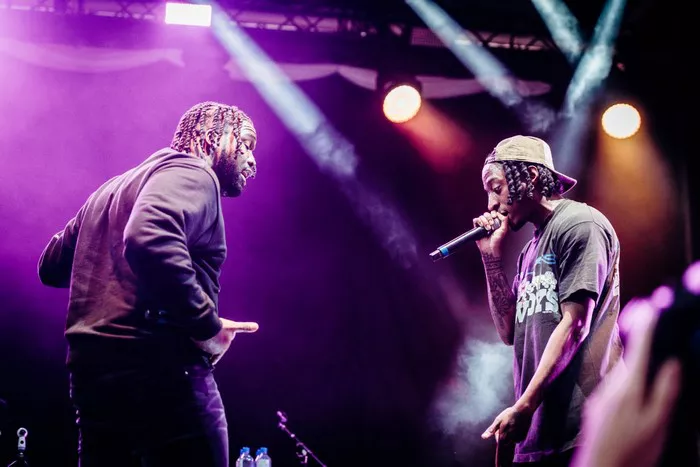Rap music and hip-hop culture have a rich and vibrant history. These two art forms emerged in the early 1970s. They began in the Bronx, a borough of New York City. The Bronx became a melting pot of creativity and innovation. Artists and DJs from diverse backgrounds came together. They created a sound that would change music forever. This article will delve into the origins of rap music and hip-hop culture, exploring key figures, events, and influences.
I. The Bronx: The Birthplace of Hip-Hop
Historical Context
The Bronx faced many challenges in the 1970s. Economic decline and urban decay affected the community. Many residents were struggling. Despite these hardships, creativity flourished. The Bronx became a breeding ground for new ideas and artistic expression.
Community and Collaboration
Hip-hop culture was born from community. Block parties became popular. DJs would set up sound systems. They played music and brought people together. This sense of community laid the foundation for hip-hop culture.
II. Key Figures in the Emergence of Rap
DJ Kool Herc
DJ Kool Herc is often credited as the pioneer of hip-hop. He hosted the first block parties in the Bronx. Herc introduced the concept of breakbeats. He would isolate the instrumental section of a song, allowing dancers to showcase their moves. This innovation was crucial in shaping the sound of hip-hop.
Afrika Bambaataa
Afrika Bambaataa played a significant role in hip-hop’s development. He founded the Zulu Nation, a group that promoted peace and unity. Bambaataa helped establish hip-hop as a cultural movement. He blended different musical styles, expanding the genre’s reach.
Grandmaster Flash
Grandmaster Flash was another key figure. He advanced DJ techniques, such as cutting and scratching. His contributions to the art of DJing were revolutionary. Flash’s work helped define the sound of early rap music.
III. The Elements of Hip-Hop Culture
MCing
MCing, or rapping, is a core element of hip-hop. It involves rhythmic speech and wordplay. Early MCs would hype up the crowd at block parties. Over time, rap evolved into a complex art form with varied styles.
DJing
DJing is equally important in hip-hop culture. DJs provide the music and create the beats. Their skills shape the overall sound of hip-hop. Techniques like mixing and scratching are essential to this art.
Graffiti Art
Graffiti art is another key element. It serves as a visual expression of hip-hop culture. Artists use spray paint to create colorful murals. These pieces often reflect social and political messages. Graffiti became a way for artists to claim their space.
Breakdancing
Breakdancing, or b-boying, is a physical expression of hip-hop. Dancers perform acrobatic moves to the music. This dance style emerged alongside rap and DJing. It adds an energetic visual component to hip-hop culture.
IV. The Evolution of Rap Music
The Late 1970s and Early 1980s
In the late 1970s, rap music began to gain traction. Songs like “Rapper’s Delight” by the Sugarhill Gang brought rap to a wider audience. This marked the beginning of commercial success for the genre.
The Golden Age of Hip-Hop
The late 1980s and early 1990s are often referred to as hip-hop’s Golden Age. Artists like Public Enemy, N.W.A, and A Tribe Called Quest emerged. They pushed the boundaries of rap, addressing social issues and personal experiences in their lyrics.
Mainstream Success
In the mid-1990s, rap music achieved mainstream success. Artists like Tupac Shakur and The Notorious B.I.G. became household names. Their influence extended beyond music, shaping popular culture.
V. Hip-Hop Culture Beyond Music
Fashion
Hip-hop culture has significantly influenced fashion. Baggy jeans, oversized shirts, and sneakers became popular. Designers began to incorporate hip-hop elements into their collections. This trend continues to shape the fashion industry today.
Language and Slang
Hip-hop culture has also impacted language. New slang terms and phrases emerged from the rap community. These terms have entered mainstream vernacular, reflecting the culture’s influence.
Film and Media
Hip-hop culture has found its way into film and media. Movies like “Wild Style” and “8 Mile” showcase the artistry of rap and hip-hop. Documentaries explore the history and impact of the genre.
VI. Global Influence of Hip-Hop
International Reach
Hip-hop culture is not limited to the Bronx. It has spread globally. Countries around the world have embraced rap music. Artists from diverse backgrounds create their own styles, reflecting local cultures.
Adaptations and Variations
Different regions have developed unique variations of hip-hop. For example, UK grime blends rap with electronic beats. In France, rap incorporates local language and themes. These adaptations showcase the genre’s versatility.
VII. The Future of Rap and Hip-Hop
Continued Innovation
Rap music and hip-hop culture continue to evolve. New artists emerge, bringing fresh ideas. Genres blend and influence one another. This innovation keeps the culture dynamic and relevant.
Social and Political Impact
Rap music remains a powerful tool for social commentary. Artists address issues such as racism, inequality, and justice. The genre provides a platform for marginalized voices. This impact will likely grow in the future.
See Also: What is Cadence in Rap Music?
VIII. Conclusion
Rap music and hip-hop culture originated in the Bronx. This vibrant borough became the birthplace of a movement that changed music and culture. From DJ Kool Herc to Afrika Bambaataa, key figures shaped the genre’s development. The elements of hip-hop—MCing, DJing, graffiti art, and breakdancing—combined to create a rich cultural tapestry. As rap continues to evolve, its influence remains strong. The future of hip-hop is bright, and its roots in the Bronx will always be a vital part of its story.
Related Topics

